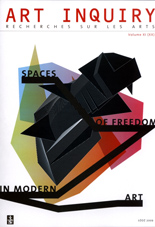The Space of Art History. Mieke Bal’s “preposterousness”
The Space of Art History. Mieke Bal’s “preposterousness”
Author(s): Mateusz SalwaSubject(s): Philosophy
Published by: Łódzkie Towarzystwo Naukowe
Keywords: Belting; Bal; end of art; preposterous history
Summary/Abstract: The article takes its point of departure in Arthur Danto’s and Hans Belting’s theses about the end of art history conceived not only as the end of the history of art, but as the end of the academic discipline. For Danto the end of art means that it is not possible any longer to create a linear narration about art and as a result such categories as development or progress cease to be adequate – therefore, it is not possible to assume a la Hegel that the position of an artwork is defined by what precedes it and what follows it. Moreover, according to Danto, contemporary art is a space where everything is possible and nothing is excluded as it used to be in the past. Art history, as a discipline based on this outdated model which does not fit today’s reality, hence loses its usefulness. On the other hand, for Belting the end of art history means mainly that we should get rid of the traditional model in favor of an interdisciplinary study whose boundaries are not clearly defined and where different discourses can freely meet. In the second part of the article the author analyses some aspects and basic concepts of Mieke Bal’s theory of preposterous art history. The author’s contention is that this theory can be interpreted as an approach fulfilling Danto’s and Belting’s postulates for it departs far from the linear model of art history as a discipline and turns into a “spatial” one. What is more, Bal’s theory seems to be an academic response to the condition of contemporary art – it crosses the border between theory and practice in a very similar way.
Journal: Art Inquiry
- Issue Year: 2009
- Issue No: 11
- Page Range: 159-173
- Page Count: 15
- Language: English

